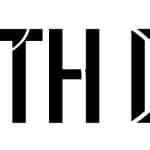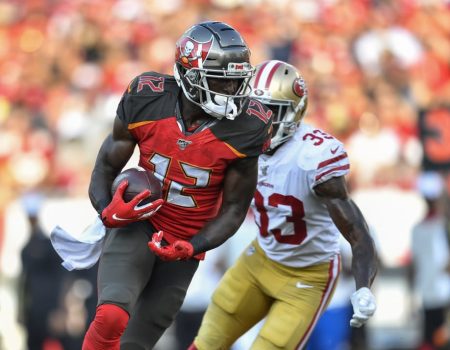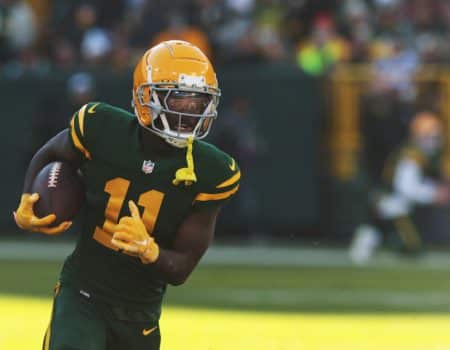Players that have burned fantasy gamers in the past often slip down draft boards in favor of the hot new player on the block. For savvy fantasy owners, these situations present an opportunity to buy a player for much less than they should be going for. Green Bay Packers wide receiver Randall Cobb is the perfect example this season. Cobb is being drafted as the WR36 despite being the No. 2 option in one of the most prolific offenses in the NFL.
[sc name=”Google Inline Ad”]
In general, opportunity trumps talent when it comes to fantasy football. An average player in line to see above average volume will almost always outperform an above average player in line to see average volume. At this point in his career, Cobb has demonstrated that his 90-catch, 1,200-yard 2014 season was an outlier in an otherwise unremarkable career. However, as the No. 2 option in Green Bay’s pass-heavy attack following the departure of Jordy Nelson, Cobb is a screaming buy at his current average draft position. Outside of Davante Adams, none of the other wide receivers on the Packers have proven themselves as NFL-caliber options. The Packers drafted three wide receivers but didn’t take any of them until the fourth round. Cobb is in line for triple-digit targets as Green Bay’s starting slot receiver.
Furthermore, Aaron Rodgers has proven that he is capable of supporting multiple fantasy-relevant wide receivers. In the eight seasons that Rodgers has played 15 or more games, Green Bay’s No. 2 receiver has finished as a top 30 WR 7 times and a top 24 receiver 6 times with an average finish of WR21.3.

Because of Rodgers’ injury last season and Cobb’s injury-riddled 2016, the public has forgotten how productive Cobb has been when both are on the field. In the last 21 games that both Cobb and Rodgers played, Cobb averaged 7.3 targets for 5.1 receptions, 56 receiving yards, and 0.4 touchdowns per game. Extrapolated over a 16-game season, those averages would have placed Cobb as the WR23 on a points per game basis last season, and that’s with Jordy Nelson still on the team.
The elephant in the room here is Green Bay’s decision to sign former Seattle tight end Jimmy Graham in free agency. Graham caught 10 touchdowns last year, but his numbers in other areas all fell off in a big way. Graham had only 520 receiving yards and averaged the fewest yards per target of his career. Graham’s game speed also dropped significantly, illustrating that he may be on his last legs as an athlete. At this point, Graham is mostly only a red zone factor as he can use his body to box out opposing defenders. Cobb is a much more able receiver at this stage in their respective careers, so expect Cobb to operate as the No. 2 option in the Green Bay passing attack.

As Aaron Rodgers’ No. 2 target in a prolific Green Bay passing attack, Randall Cobb will be a fantasy-relevant wide receiver this season. At his current average draft position, Cobb is possibly the best value in fantasy football. Given the production of former No. 2 options in Green Bay and the lack of other receiving options, expect WR2 production out of Cobb in 2018 in PPR formats.






No Comment! Be the first one.